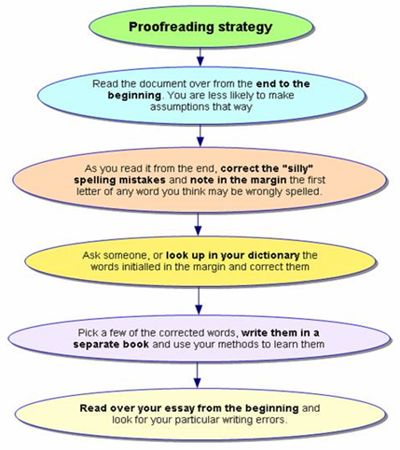Proof Reading
Often, after we have written something, we are told “read it over carefully”. Still, even after we have read it, it comes back with what we sometimes call “silly mistakes” in spelling and punctuation.
What is proofreading?
Proofreading is the process of finding and correcting spelling, grammar, punctuation and formatting errors. If you had proofread your book listing, you would’ve been able to afford that matinee show. Proofreading errors, even if they cost nothing as far as money, can be pretty embarrassing. Failing to properly proofread your material before it leaves your desk can not only be embarrassing, but also lead to miscommunication.
These are the different stages of writing:
- listing ideas (sometimes called brainstorming)
- writing rough notes
- first draft
- proofreading
- final copy
Proofreading gives you a chance to make sure that no words are missing and that your spelling is correct. It is also a good idea to check that capital letters and punctuation such as question marks, apostrophes, commas and full stops are all in the right place.
During the proofreading stage you could refer to a dictionary or use the features in your word processing software, such as grammar check and spell checker.
Five common errors to look for when proofreading
Here are some common errors to look out for when proofreading your work:
1. Putting the wrong word in the wrong place – especially when using homophones. Homophones are words which sound the same (or similar) but have different spellings and meanings.
Other common homophone pairs to watch out for are of and off; to and too; there and their and which and witch.
2. Leaving letters out, for example in the middle of words. Many words contain silent letters, or letters that are not sounded out when you say them quickly.
3. Mistakes when adding an ending, or suffix, to a root word. It’s easy to make mistakes especially when adding the -ing suffix.
Try to remember the rules for adding the -ing suffix to root words that end in ‘e’ or a short vowel followed by a consonant.
E.g. Make + -ing = making (drop the final ‘e’)
shut + ing = shutting (double the final consonant)
4. Using a small i as a pronoun. A pronoun is a word that stands in place of a name such as Sheila or John. Remember that whenever I is a word on its own, you should use a capital letter.
E.g. Max and I went to the cinema last night.
5. Missing words out. Most people sometimes think faster than they write, so it’s easy to leave out small words such as a, the, and, it, and in. Careful proofreading can help you spot this type of mistake.
Tips for effective proofreading
- Try listening to the sound of your voice ‘inside your head’ as you read, or better still, read the text aloud. There is also software available to help you do this, for example Texthelp Read and Write and Read Aloud (for more information about assistive technology, please see separate link – create hyperlink??) This will help you spot if any words have been left out. Make sure not only that the words are spelled correctly but that the meaning of the sentence as a whole is clear.
- Try writing problem words out several different ways to see which version looks right. This will help to improve your visual memory, so that you feel more confident in correcting your spelling.
- Make sure that facts (such as phone numbers, dates of birth or email addresses) are clearly written and correct. Double check these if necessary.
- Focus on words that you know give you problems. These will vary from person to person, but they could be words with a particular ending (such as -ing) or a soft ‘c’ as in ‘cinema’ or ‘centre’.
- You could create some kind of record (on computer or in a small notebook) of your common errors and the correct form to refer to when proofreading
- Pay special attention to homophones – words that sound the same but are spelt differently and have different meanings. For example:
there and their
two and too - Don’t rely on a computer spell checker to find every mistake. It won’t pick up errors such as using ‘wear’ instead of ‘where’.
- Make sure you leave enough time to proofread your writing carefully, especially if you are in a hurry!
Good proofreaders:
- Have a good visual memory – they can usually spot when a word looks wrong.
- Know the most common spelling rules in English.
- Look at the meaning of a piece of text to make sure it makes sense as well as checking the spellings of individual words.
- Are aware of possible and probable letter combinations. For example every word in English must contain a vowel sound.
- Don’t rely on the computer spell checker to find every mistake.
A suggested strategy for proofreading

Information Source:
















